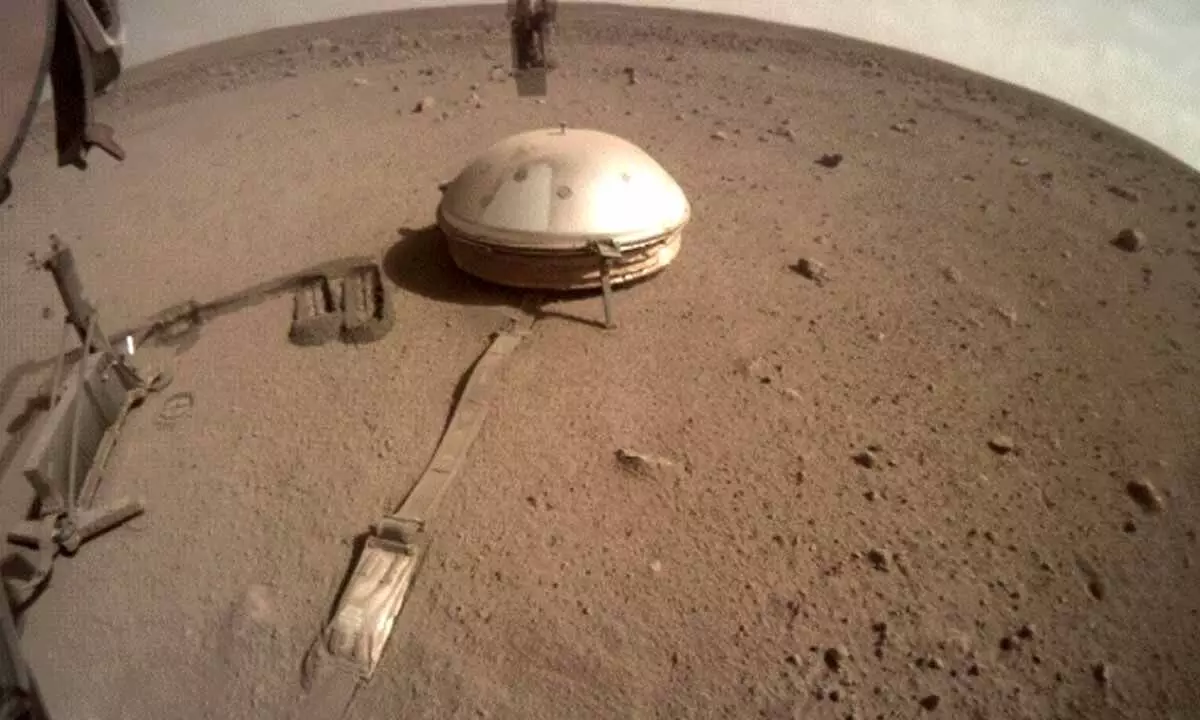2 largest marsquakes recorded on Red Planet's far side

2 largest marsquakes recorded on Red Planet's far side (Photo/IANS)
A seismometer placed on Mars by NASA's InSight lander has recorded two largest seismic events on the Red Planet to date: a magnitude 4.2 and a magnitude 4.1 marsquakes.
London: A seismometer placed on Mars by NASA's InSight lander has recorded two largest seismic events on the Red Planet to date: a magnitude 4.2 and a magnitude 4.1 marsquakes.
The pair are the first recorded events to occur on the planet's far side from the lander and are five times stronger than the previous largest event recorded.
Seismic wave data from the events could help researchers learn more about the interior layers of Mars, particularly its core-mantle boundary, researchers from InSight's Marsquake Service (MQS) reported in The Seismic Record.
A team led by Anna Horleston of the University of Bristol were able to identify reflected PP and SS waves from the magnitude 4.2 event, called S0976a, and locate its origin in the Valles Marineris - a massive canyon network that is one of Mars' most distinguishing geological features and one of the largest graben systems in the Solar System.
S1000a - the magnitude 4.1 event recorded 24 days later - was characterised by reflected PP and SS waves as well as Pdiff waves, small amplitude waves that have traversed the core-mantle boundary.
This is the first time Pdiff waves have been spotted by the InSight mission.
The researchers could not definitively pinpoint S1000a's location, but like S0976a it originated on Mars' far side. The seismic energy from S1000a also holds the distinction of being the longest recorded on Mars, lasting 94 minutes.
Both marsquakes occurred in the core shadow zone, a region where P and S waves can't travel directly to InSight's seismometer because they are stopped or bent by the core. PP and SS waves dona�t follow a direct path, but rather are reflected at least once at the surface before travelling to the seismometer.
The two marsquakes differ in some important ways. S0976a is characterised by only low frequency energy, like many of the quakes identified so far on the planet, while S1000a has a very broad frequency spectrum.
S0976a is likely to have a much deeper origin than S1000a, Horleston noted.
Compared to the rest of the seismic activity detected by InSight, the two new far-side quakes are true outliers, the researchers said.
"Not only are they the largest and most distant events by a considerable margin, S1000a has a spectrum and duration unlike any other event previously observed. They truly are remarkable events in the Martian seismic catalogue," Horleston said.




















